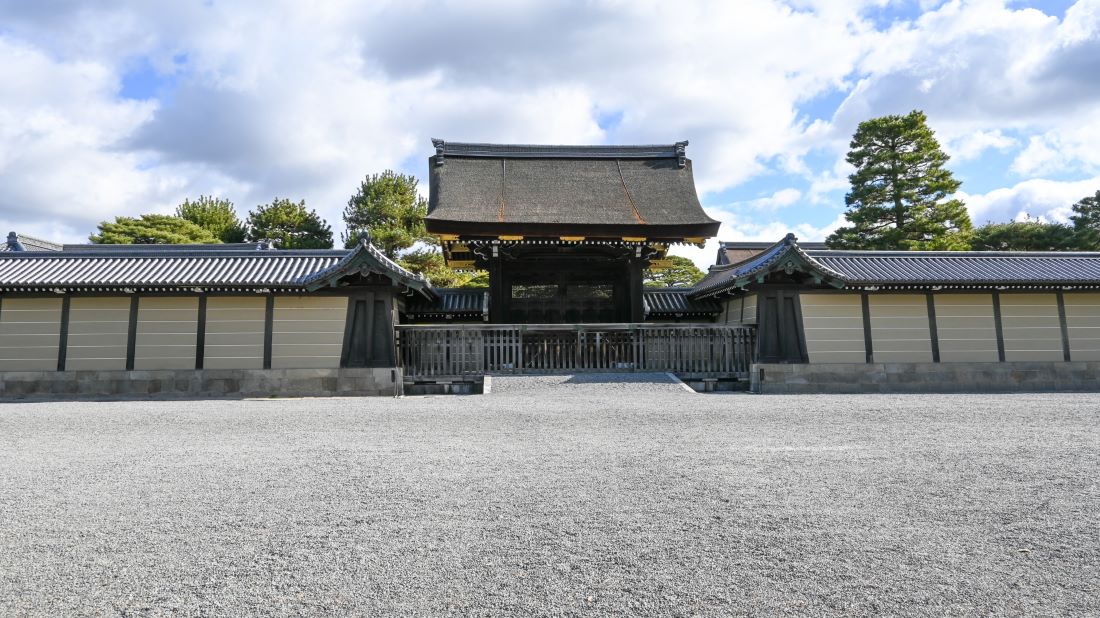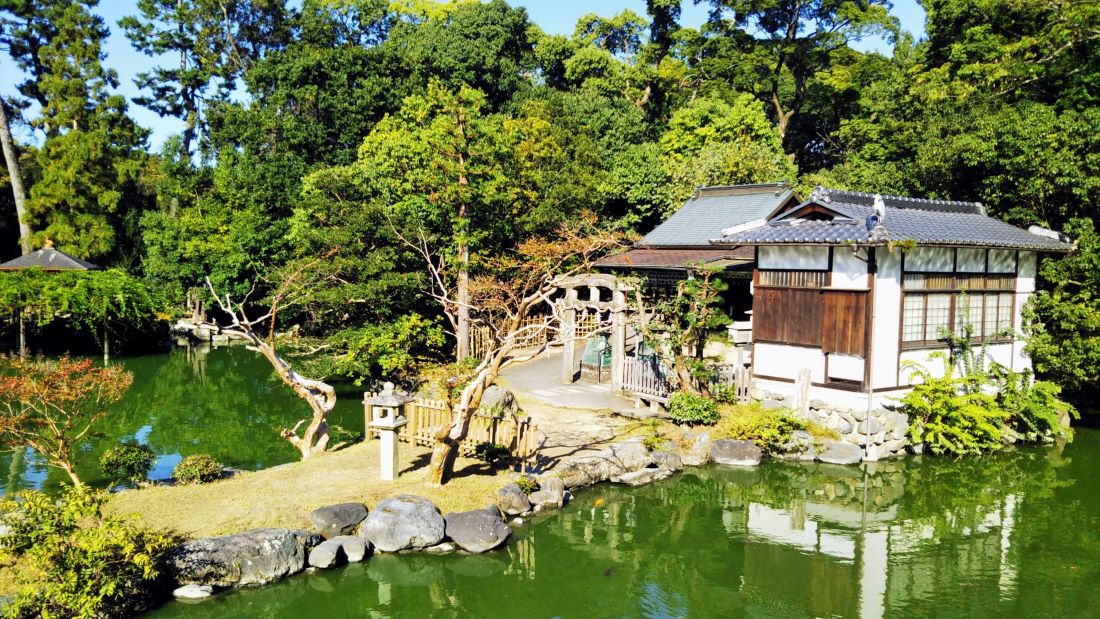Kyoto Imperial Palace, also known as Kyoto Gosho, is a fascinating historical site located in the heart of Kyoto. It served as the residence of the Imperial Family until the capital was moved to Tokyo in 1869. The palace is situated within Kyoto Gyoen park and is enclosed by a roofed earthen wall.

The current buildings of the Kyoto Imperial Palace date back to 1855 and are highly reminiscent of the dynastic age. The palace features the Seiryo-den (Palace Hall) and the Kogosho (Minor Palace), which are both open to visitors. The palace and its neighboring official edifices are under the supervision of the Imperial Household Agency and are open to the public for guided tours.
Key Takeaways
- Kyoto Imperial Palace served as the residence of the Imperial Family until 1869 when the capital was moved to Tokyo.
- The palace is located within the Kyoto Gyoen park and is enclosed by a roofed earthen wall.
- The current buildings of the palace date back to 1855 and are open to visitors.
- The palace features the Seiryo-den (Palace Hall) and the Kogosho (Minor Palace).
- The palace and its neighboring official edifices are under the supervision of the Imperial Household Agency.
- Guided tours of the palace are available to the public.
- The palace is a popular tourist attraction in Kyoto, Japan.
- The palace is a fascinating historical site that offers a glimpse into the dynastic age.
History

The Kyoto Imperial Palace, also known as the Kyōto-gosho, was built in 794 as the official residence of the Emperor of Japan. The palace was located in the Heian-kyō, which was the capital of Japan at that time. The palace was destroyed by fire several times and was rebuilt each time. The current buildings were reconstructed in 1855 after it had burnt down and moved around town repeatedly over the centuries.
After the Meiji Restoration in 1869, the Emperors moved to the Tokyo Imperial Palace, and the Kyoto Imperial Palace was no longer used as the residence of the Imperial Family. However, the preservation of the palace was ordered in 1877, and it became a national treasure. The palace is now open to the public, and visitors can take a guided tour of the palace grounds.
During World War II, the palace was damaged by air raids, and some of the buildings were destroyed. The palace was reconstructed after the war, and the current buildings are modern reconstructions of the original structures. The palace is now under the supervision of the Imperial Household Agency and is one of the most popular tourist attractions in Kyoto.
Architecture

The Palace is an example of traditional Japanese architecture, with its buildings and gardens reflecting the aesthetic principles of simplicity and harmony with nature. It is surrounded by long walls and is accessed through several gates, each with its own unique architectural style.
The buildings within the palace complex are constructed using natural materials such as wood, bamboo, and paper, and are designed to be flexible and easily modified. The palace also features shoji screens that can be opened or closed to control the amount of light and air flow within the rooms.
One of the most impressive buildings within the palace complex is the Shishinden, which served as the main hall for enthronement ceremonies of emperors Taisho and Showa. The Shishinden is a large, open space with a high, peaked roof supported by wooden columns. The roof is covered in cypress bark, which gives it a distinctive texture and color.
The gardens within the palace complex are equally impressive, with carefully curated landscapes that reflect the changing seasons. The gardens feature a variety of plants and trees, including cherry blossoms, pine trees, and bamboo.
Gardens

The Kyoto Imperial Palace is well-known for its beautiful gardens that are spread over a large area. The gardens are designed in a traditional Japanese style and are considered to be some of the finest examples of Japanese garden design.
One of the most popular features of the gardens is the North Pond, which is surrounded by beautiful cherry blossom trees. The pond is also home to a variety of fish and turtles, making it a popular spot for visitors to relax and enjoy the peaceful surroundings.
The gardens also contain two tea house pavilions, which were used for traditional Japanese tea ceremonies. These tea houses are open to the public and visitors can experience a traditional tea ceremony while enjoying the serene surroundings.
The garden path leads around the North Pond and crosses the canal connecting the North Pond and the South Pond. The South Pond is also a beautiful spot, featuring a small island and a bridge that connects the island to the shore.
The garden is meticulously maintained and is a great place to take a relaxing stroll. Visitors can enjoy the beautiful scenery and take in the peaceful atmosphere, which is a welcome break from the hustle and bustle of the city.
Visiting Information

If you’re planning to visit, here’s some important information to keep in mind:
- Hours: 9:00 to 17:00 (April to August), 9:00 to 16:30 (September and March), and 9:00 to 16:00 (October to February).
- Admission: Free.
- Closed: Mondays (or following day if Monday is a national holiday), December 28 to January 4, and occasional closures when the palace is used for some events.
- Entrance: Visitors must enter through the Imperial Park’s Okazaki Entrance Gate.
Visitors are not allowed to enter the palace buildings themselves, but you can walk around the palace grounds and enjoy the beautiful gardens and architecture. Guided tours are available in English and Japanese, but they must be reserved in advance through the Imperial Household Agency’s website.
It’s important to dress appropriately. Shoes must be removed before entering the palace grounds, so it’s recommended to wear shoes that are easy to take off and put back on. Additionally, visitors should avoid wearing hats or sunglasses inside the palace grounds as a sign of respect.
Finally, visitors should be aware that photography is not allowed inside the palace grounds. However, there are plenty of opportunities to take photos outside the palace buildings and in the surrounding gardens.
Interesting Facts

The Kyoto Imperial Palace has a rich history and is filled with interesting facts that make it a must-visit destination for anyone interested in Japanese culture and history. Here are some of the most fascinating facts:
- The current Kyoto Imperial Palace was built in 1855 and served as the residence of the Japanese imperial family until 1868.
- The palace was built on the site of the original Heian Palace, which was abandoned during the Heian period.
- The palace is located in Kyoto Gyoen, a 63-hectare park in the heart of the city.
- The palace and its neighboring official edifices are open to the public for visits under the supervision of the Imperial Household Agency.
- The palace is a great example of traditional Japanese architecture and features beautiful gardens and ponds.
- The palace is surrounded by a moat and a wall that is 2.6 kilometers long.
- The palace is home to many important cultural treasures, including paintings, calligraphy, and ceramics.
If you’re planning a visit to Kyoto, be sure to add the Kyoto Imperial Palace to your itinerary. You’ll be able to immerse yourself in Japan’s rich history and culture while enjoying the beautiful surroundings of the palace and its gardens.




